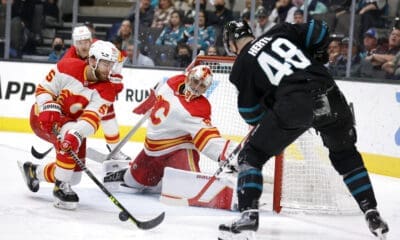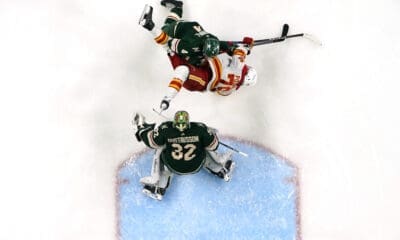Calgary Flames
Understanding Advanced Stats, Part Four: Relative Corsi and Quality of Competition

Advanced stats are not perfect and are mostly useless as evaluators of talent (like pretty much any other stat) without context, and the bigger the sample size the more accurate a stat will become-ideally, for hockey, this means at least an 82 game season.
I understand some people might have issues when we bring up things like PDO, GVT, CorsiREL and other non-traditional ways of evaluation. In my opinion, these stats add to the game, and I don’t want someone to be lost when they read an article here because they don’t know what the hell Zone Start is or how it impacts a player’s stature.
By no means am I an expert when it comes to these things: I, too, still have a lot to learn. These are my interpretations; if I have something wrong please bring it up and I’ll edit the article accordingly.
With those things in mind, I present to you part four in a glossary of advanced stat terminology.
Relative Corsi: Corsi REL is a relatively simplistic way of measuring how effective a player is in driving possession relative to the rest of his team. At its most basic level, the stat reflects a player’s raw EV Corsi relative to the raw EV Corsi to the rest of the team when he is not on the ice. For example, Robyn Regehr‘s Corsi REL last year was -11.4, which means ~11 shots more per 60 minutes of even strength ice time were directed at the Flames‘ net while he was on the ice then when he wasn’t. Now, that may seem really terrible (in fact, it was in the bottom third of the league last year-lumped in with superstars like Deryk Engelland, Cody McCormick and Bryan Allen) but when you take into account a couple of other stats, a number that low is to be expected.
Quality of Competition: To put it bluntly, QUALCOMP is the measure of how good the opposing players a player is facing are. It's measured by the player's relative plus/minus (plus/minus of when the player is on the ice / [plus/minus when the player is on the ice + plus/minus when the player is off it]) and it's weighted based on TOI versus the player. A player who has a high QUALCOMP faces good quality competition, or at the very least competition that outscores the rest of their team while they're on the ice. Players who have the best QUALCOMP rating are generally shutdown centres and defenseman, as they are usually the ones tasked with facing the oppositions best players.
An Important Note-
These two stats, maybe more then any others, require context to ensure they're being read accurately. I don't particularly like these stats by themselves because they can introduce bias based on false assumptions, but I guess anything can do that. Using these two stats in concert, however, is an excellent idea and we'll look at that next week.
(Check out Behind the Net, Time on Ice, Hockey Analysis, Hockey Prospectus and Arctic Ice Hockey for all your stat-nerd needs.)
by Richard Hammond









